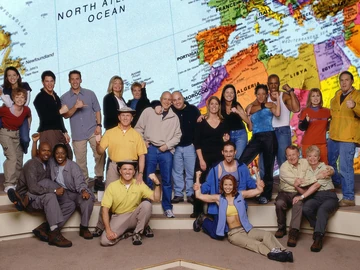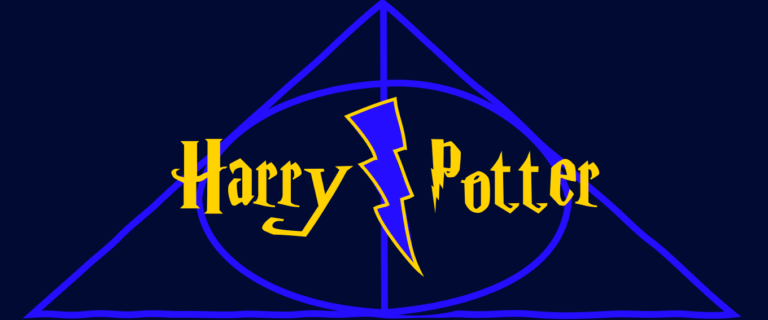
The premise was as simple as it was radical: “11 two-person teams, bound by friendship, love, or family, will race around the world.” In a time before smart-phones and digital cameras, and at the dawn of the internet, CBS had the wild idea to greenlight The Amazing Race – a globetrotting free-for-all for $1,000,000 – the result of which is a show that persists to the present day, allowing the millions of enthralled viewers to experience places few will ever travel to – about to hit 100 countries throughout show’s run.
Having recently begun a series rewatch with my girlfriend, I thought it would be fun to review each season of the show, starting from the beginning some 24 years ago. The Amazing Race 1’’s production was notoriously chaotic – nothing like this had ever been attempted on film in history. What followed is 13 episodes of unbridled adventure; this was Around the World in 80 Days in the modern age. The race has never felt more open and authentic than at its beginnings, while there are some early-installment kinks that get smoothed out over time. If you want juicy behind the scenes content about how the season came to be, check out Andy Dehnart’s magnificent oral history of the show, as well as this well-researched timeline on the old TWoP website (uses the Wayback Machine).
What is The Amazing Race?
It is a reality competition featuring 11+ pairs of teams traveling the world in an 11-13 stage race (depending on the season) for $1,000,000. Each stage is called a “leg” and usually makes up one episode. Each legs involves several clues and challenges for teams to follow as they travel from Point A to Point B, before ending the leg at a Pit Stop. Most Pit Stops end in the elimination of the last place team, to the point where only 3 teams remain to cross the finish line. In the early seasons including this one, each team stays at the Pit Stop for 12 hours before leaving, although production delays could extend these to 36 or even 60 hours. There were 4 types of clues at the beginning of the show:
Let’s step back into the 480px, 4:3 aspect ratio time machine and dive into the inaugural Amazing Race. Spoilers ahead!!!
Casting
One gets the sense that the casting director really went above and beyond to make the initial group of racers a true cross-section of America. This is a very diverse group for its day, by age, by type of relationship, by region of the country, by race, by background, and by life experience. While there is one pair of wannabe actors (Paul & Amie), the rest all feel like normal people you could run into in real life. In a bit of LGBT+ history, Joe & Bill, self-titled Team Guido after their adorable little chihuahua, became the first openly out couple on a non-scripted show in US television history. While a good chunk of other teams came for the adventure, Joe & Bill openly came to win. Their tactics coupled with their smarminess caused a rift the contestants, providing a nice stew of drama throughout the show.
This season takes great care to avoid one-note characters, a choice that later seasons would do well to revisit. Almost every team goes through some kind of journey; even Matt & Ana have a cute little moment in the NY subway dreading being the first out, only for their worst fears to come true. Apart from the Guidos, three stories drive the season: 1) brief alliances between what becomes the top 3 teams and another one featuring the self-styled “Underdogs”, who get eliminated one by one, 2) separated parents Frank & Margarita reigniting their relationship, and 3) Kevin & Drew going from “bungling crooks in a movie” to surprise contenders while turning the show into their personal comedy hour.
The underdogs are a motley crew, some rootable (Dave & Margaretta, the kick-ass grandparents anyone would want), some messy (LENNYYYY & Karyn, who argue their way out of love as the episodes tick by). The last underdog standing, mom and daughter duo Nancy & Emily, ushers in an endgame like no other when they shockingly fall apart in Bangkok (more on that later!) As that is happening, Frank & Margarita have gone from a exes to lovers once again, as Frank tones down his aggression and learns to appreciate Margarita’s significant strengths, communicating their way to the top. The only team to pose a threat to the initial group of top-dogs are the least likely – fraternity brothers Kevin & Drew, who by their own admission did “zero in preparation” and came close to going out first. My vote for funniest team of all time continue to roast each other and crack jokes the whole time, but start to realize in India, along with the audience, that they are capable of winning as well. Drew’s badass speech when checking into the pitstop in episode 8 is just awesome. Their arc comes full circle when they finally go down, Drew’s tears revealing how much they truly cared after all while Kevin quotes Buddha in reference to the Race.

Raw and Unpolished
One strike against this season is the first two episodes, where the producers designed a race course that simply could not work in a 44-minute episode. The first episode is downright jarring, with a lack of background music, shaky camera work, and the teams edited to be bunched up together to where it is hard to make out who is where in the standings. The second episode has too much happening as well, as Dave & Margaretta just drop out of the episode from Africa until after the Eiffel Tower challenge to make room for all the other chaos going down.
On the flipside, these things kind of add to the charm; the whole season feels wonderfully unpolished and under-produced. How clues are explained changes by the episode, production difficulties lead to multiple times credits, and a pitstop has to evacuated to the weather and security concerns. Some clues appear to be handwritten; the competition gets delayed a day due to an airport strike. On-screen identifiers of what place the team is currently in while racing don’t appear until episode 11. Things like this would never happen in the present-day.
Putting the “Real” in Reality
There is an argument to be made that The Amazing Race was only ever run one time. A purity exists in season 1 that has never been replicated in that production stayed out of the way and just let the race unfold without trying to influence it; even when rest periods get extended, teams always begin legs 12 hours later than the time they checked in, and no phony “hours of operations” bunching of teams occurs outside of the hours that businesses are open. This leads to an authentic experience; you can actually play what-if scenarios legs apart, like what if Lenny & Karyn go for the Fast Forward when they get a huge lead in Italy, or what if Nancy & Emily just hop on a bus in Bangkok and survive that leg with their Fast Forward still in tow!
Outside the initial offering of 3 flights to South Africa and the charter planes to and from Zambia in legs 1 and 2, I believe that the entire rest of the season is open-ended for the teams with no outside interference. I can see why that changed in future seasons; having teams continents apart is both a logistical nightmare and sucks all the drama out if one team gets a huge lead. This leads to an incredible sense of adventure that just dominates the show and has never quite been replicated.
Figuring it Out
The Dehnart article linked above confirms what one senses when watching this – that the show is figuring out things on the fly. Not surprising for such a wild concept and logistical nightmare like filming a race throughout the world! There are some growing pains here as the show figures out what it wants to be, and sheds some things that don’t work. With that comes several one-offs that make this season even more unique: Phil’s cheesy voiceover in the intro, teams beating producers to route markers before they are even set up in Paris, Phil popping out like the Grim Reaper to only greet the last place team, the unique Pit Stop mats and clue boxes, and the yellow-and-white race colors.
The only loss among the experiments the show sheds after this season is the writing of the clues, which has never been better. Unlike future seasons which just say, “Go here” and provide detailed directions and a means of transport, the clues early on were highly cryptic and open ended. It was gripping to watch teams grapple with flying thousands of miles to Paris based only on a figurine of the Eiffel Tower, Pat & Brenda falling victim to a surprise second Foucoult’s pendulum chilling in Paris, and teams being sent out into the Sahara Desert with only a compass, a shitty map, and the occasional yellow rock to follow. That sojourn in the desert is probably what spells the end of difficult clues, as Paul & Amie drive themselves nearly out of Tunisia and lose radio contact with the producers, leading to a dramatic evening rescue before they literally spent a night lost in the Sahara. When the show attempts a similar concept in Season 5, they use a GPS and the Pit Stop is practically within site of the start of the camel challenge.
The Route – Adding the “Amazing”
When you have one chance to make a tv show, you go all out. That principle is so, so clear in the route this race takes. Talk about putting the “amazing” in The Amazing Race; the three finalists got to travel to Victoria Falls, an African Safari, the Eiffel Tower, Arc de Triomphe, Southern France, the Sahara Desert, the Coliseum, the Taj Mahal, the beaches of southern Thailand, the Great Wall of China, and the Alaskan wilderness. And they got paid to do it! This is the season I would love to have been on the most just to see these global icons. Beyond the wonders of the world, the teams also are tossed right into local cultures, riding the same trains in India as locals and engaging in the first of many eating challenges, downing some squid, crickets, and chicken feet in China.
When comparing a modern season to the original, one thing that stands out is how the producers mixed up the leg design. Here, every leg is a surprise: you never knew if the tasks were going to be mental like leg 3 in Paris to Les Baux, or physical like in Phuket in leg 10. Some legs had the challenges spread over multiple continents (2, 7, 12); others were more compact. Two of those, legs 3 and 9, even threw in a late twist where the Pit Stop was in a different part of the country than the rest of the leg. On the flip side, leg 4 had the Road Block challenge and the subsequent Pit Stop at the same location. As a viewer, I was always on my toes with each leg feeling unique, fun, and original. It would great if modern seasons put more distance between clues to shake things up again!
Editing – An Unusual Presentation
Once we get past the rough first two episodes, the remaining 11 are a masterclass in how to tell a story. In my opinion, a lot of modern entertainment dumbs itself down and doesn’t trust its viewership. The Race, and a lot of reality tv, is not exempt from this: in modern seasons, think of the sound effect when teams miss a clue, the color coordinated outfits for all teams, and the more one-dimensional characters. The Amazing Race 1 is the opposite – this is a product that believes in the intelligence of its audience to pick up on the details. So many little editing jokes are thrown in (some fun ones I picked up on are a horn-honking bumper sticker in India while Emily talks about her cabbie always honking, the Guidos saying Kevin & Drew got lost, only for the camera to cut right to them dancing at the Pit Stop, and the shaky camera when the Guidos’ cab won’t start in India) making rewatches just as engaging as the first time.
The style of editing is also interesting – this is less of a game show and more of a cross between a drama and a documentary. A lot of scenes aren’t edited at all and are presented without music; the background music is composed to scene by 4 different composers and is generally low-key compared to the over-the-top sound of later seasons but almost cinematic in nature – dark and dramatic.
One aspect I loved that lasted through the next couple of seasons is how the latter part of Race 1 features time stamps for almost all the major events happening in the episodes. It feels like you can play along with the events better watching from home and also adds an air of authenticity to the show.
A True Travel Show
What has become a game show that travels starting as a traveling show with games. More than any other season, the biggest skill required to succeed is how to navigate. The Detours and Road Blocks here are just small cultural sideshows for the real challenge of traveling from Point A to Point B. Amongst the teams that lost, only Nancy & Emily lost directly because of a challenge when they quit the Detour in Bangkok. The rest of teams didn’t win because of traveling errors or bad luck; even mom’s Pat & Brenda, who dropped into last place with their pendulum blunder, could have caught up at the train station but booked the wrong tickets off screen for a later train, per the timeline linked above.
The tasks, while smaller in scope than we will come to know, are still exciting to watch and add a lot of heart to the show. The giant swing in the first episode shows how epic an adventure this will be and spawns the best quote of the season, “Swing you fat bastard, SWING!” Other standout moments include taking pictures on a Safari, using the Eiffel Tower for a game of “Spot the Monument”, ringing Quasimodo’s Bell at Notre Dame, finding the swords in the Coliseum in Tunisia, riding a camel through the Sahara, finding out Smart Cars existed in 2001, walking through Karni Mata Temple’s ample rat population, the pit of tigers (sad to hear that they were abused), the most intense slow pedicab ride in human history in China, and climbing a glacier in Alaska. None were super involved challenges, but they used their environment in fun ways to pair perfectly with the emphasis on travel.
India
Episode 7, “Triumph and Loss”, evokes a lot of feelings. It is one of the most memorable episodes in the Race canon; it is not a feel-good hour of television. This is the Race’s first of many trips to India, and the show decides to go with the brutally honest approach. I think this is an episode that somehow manages to be both of its time, but does not age poorly. By that, I mean that this is from the age before social media and the 24 hour news cycle. The average American had no idea what day-to-day life looked like in New Delhi and most likely had not seen many videos of the country, ever. Thus, the viewers are given jarring clips crippling poverty: shady taxi drivers ripping teams off, child beggars reaching into cars, and uncomfortable comments and treatment given to the remaining female racers.
To me, it manages to bring awareness of what life is like in other, less privileged places while not being exploitive. No part of this episode feels like “poverty porn”; at times it is not fun to watch. “Triumph and Loss” to me feels like a pointed note that this race takes place in the real world, and the real world has plenty of problems.
How the teams navigate India is a great look into their inner character and maturity. Rob & Brennan get testy, but only when they sense they are being taken advantage of by cab drivers. Kevin & Drew are at their most reflective and come out looking the best, Drew’s comment about the children begging being a look into your soul showing a man coming to grips with what reality looks like for too many others. They also have the funniest moment of the whole India segment, Drew being incredulous that their taxi is road-worthy; his “but the tires are bald!” being 10x funnier in his thick New York accent. But for the two teams duking it out to avoid elimination, the stress of the environment and what they are seeing takes a much tougher toll. Emily, who to defense was reportedly being harassed at the Road Block, snaps off at several residents, calling them stupid to their face while her mother breaks down in tears.
And then there is Lenny & Karyn, whose fraught relationship reaches its final, tragic conclusion. The whole race, Karyn’s intensity and Lenny’s extremely laid-back nature led to constant head-butting, and it peaks here as a fight over taxi prices leads to a final, uncomfortable fight between the two. Upon hitting the mat, Karyn essentially calls off the relationship on national tv and Lenny doesn’t look too upset about it. They both seemed like excellent people who found out in a very public way they didn’t belong together. Karyn in particular was a gold mine of quotes; her drawn out “dissssapointed” to Lenny in Paris still something I quote frequently.
The Unexpected Twist(s)
Following another, honest but slightly more uplifting episode in India, the final 5 teams traveled to Bangkok in what would be the season’s best episode and one of the finest ever. It officially goes by the name “The Unexpected Twist” but I prefer to call it the “Triple Elimination” – this is only time in Race history 3 teams manage to nuke their chances in a single leg. Kevin & Drew take the biggest tumble, going from nearly opening up a massive lead on the competition when they caught an early flight to a deep hole. Their problems started with falling 2 hours behind the leaders in a futile pursuit of a private vehicle (with a classic exchange over which direction was West), and, following some Baryshnikov-esque dancing in pit of tigers, compounded their deficit when they lost even more time on the way to the Pit Stop. That gap now stood at a crucial 4 hours, cruelly stonewalling them with the business operating hours in the middle of the following leg. Their mistake may have been the smallest, but it was the most costly – from first place to out of contention in one leg.
The Guidos and Nancy & Emily, meanwhile, stole most of the drama going for a fateful Fast Forward. Nancy & Emily, long worn down by the Guidos antics in the Tunis airport and then the sexist treatment they received in India, saw their gas tank hit empty after losing the Fast Forward challenge. Then came the most unexpected of lifelines – Joe & Bill, who had been efficient and prepared the entire race, decided to sit on their victory and spend the day sitting in “air-conditioned splendor” in Bangkok to take a bus instead of paying for a driver to take them the 500 miles to Pit Stop. The cruel irony starts to hit as Nancy & Emily start to contemplate quitting the race at the Detour: they finally have the break they have been desperate for the entire race over the Guidos, but they have no idea about it. Convinced they are doomed, they opt out of the challenge and take a taxi to the next clue, waving the white flag in the process. Coasting through the rest of the leg, they shock everyone by beating the Guidos to the mat, only to be slapped with a whopping 1 day penalty for their decision. The Guidos survive, but are hours behind even Kevin & Drew while Nancy & Emily exit in the most heartbreaking way possible.
After the following leg widens the gap between the leading and trailing two teams to almost a day, the full impact of that day begins to unfold. The final nail in the coffin comes in Beijing, where a lopsided Detour appears to offer a small chance of a catchup: if they complete the Detour in time to reach a food market before it closes, they can pull to within 12 hours and catch up the following leg as Tiantan Park opens up. But both teams don’t think they can swing even 5 points in a game of ping pong, and opt for a long (and dramatic) transportation rally through Beijing in rush hour, sealing their fates. The Guidos/frat bros’ subsequent final dash to Pit Stop gets the blood pumping – my roommates were screaming at the television watching it a couple of years ago – but the hopes of both teams were done regardless by this point.
A Poetic Ending
The irony of the finale, “Race to the Finish, Part 2”, is that is the worst designed leg of the season. Both the Detour and Road Block in Alaska are rendered completely irrelevant as the flight to New York equalized the two remaining contenders, Frank & Margarita and attorneys Rob & Brennan. With only one measly clue in NYC before taking a train to the finish line at Flushing Meadows, there shouldn’t have been much in the way of drama.
Yet with the choices of the teams and some inspired editing, it works to perfection. The stage is set back in Alaska, with Frank & Margarita both ecstatic and cocky that the sprint to the finish will be not in just in their home city, but their home borough of Queens. Rob & Brennan feel the pressure, employing a genius gambit to borrow a cell phone and pre-book plane tickets to ensure they have a chance, but concede they don’t love their chances.
Upon arriving in Newark early on a fateful Sunday in March, Frank guides their cab driver way out of the way, taking the George Washington Bridge to avoid Manhattan traffic that didn’t exist at that time of day. The tension builds as Rob & Brennan reach the final clue first and make their way up the train platform with Frank & Margarita unknowingly seconds behind.
What follows is both beautiful and heartbreaking. Frank & Margarita’s relationship had been a focal point from episode 1, and the story of how they learned to grow together, communicating effectively and falling back in love receiving plenty of spotlight throughout the show while Rob & Brennan were largely afterthoughts, efficient yet drama-free competitors. Once the door on the train slams shut, sealing the victory for the attorneys, the episode becomes reflective. Both teams reflect on what a victory would mean to them as soaring music plays. Margarita celebrates their apparent victory while Frank appears less certain.
Then, the closing song from Gladiator starts to play as Rob & Brennan begin their final run to the finish line. They manage to milk every last drop of emotion out of this, a real culmination of what has been an epic, grueling journey, and it just works so well. While the 3 different angles of them raising their arms in triumph is a little much, it feels like a proper end to a proper adventure. No other finale has ever managed to hit the emotional high this one does, and the music and proper run to the end plays a huge role in it. The treats don’t stop there: Frank & Margarita are crushed when then realize their defeat, but focus on the positive ways the race has impacted them. The smash cut to Alaska to show Team Guido’s comeuppance a day behind is just the cherry on top.
Conclusion
For my money, the original Amazing Race has never been topped. Other seasons have higher highs, more polish, or more drama, but the original has the most heart. I think the biggest thing that would determine one’s enjoyment is what season of the Race a viewer starts with; someone who watches the current season on tv and then goes back to the beginning will be in for a jarring experience. The slower, almost plodding pace and rough edges aren’t for everyone, and certain moments are unpleasant to watch.
When I watch the Race, I long for the adventure and freedom that comes with traveling the most; hence this will most likely stay at #1 on my rankings throughout this rewatch.
DVD Link
This will become an Amazon Affiliates link when set up, but for now this is a link to the DVD of the season for anyone interested. It is, as of writing, also available on Hulu and Paramount+ in the United States and Disney+ in Canada.





